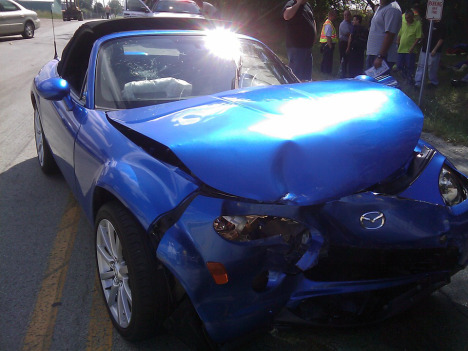Personal Note: Western New York is well known for their heavy winter conditions. Between blowing winds, heavy snowfall, white outs, and unplowed roads; car accidents happen frequently.
One type of accident is rather frequent: You’re at a stoplight and you hear the screech of tires behind you. Someone has slammed on their brakes and suddenly WHAM! They hit you from behind. Your head comes forward, then goes back and hits the headrest, stunning you for a minute. The next day, a deep, aching pain in your neck and shoulders starts giving you terrible headaches. What happened during that accident?

Whiplash
This scene above is very common all over the world, and it happens most often in winter. In rear endings, a common injury occurs called “Whiplash.” What is Whiplash?
Charles Co posted this video on the injury:
According to Spine Health, Symptoms of Whiplash are:
- Traveling Pain that goes from the neck to the head, shoulders, and occasionally down the spine. (Symptoms can vary, depending on the injury.)
- Pins and Needles or Burning pain that ranges from mild to unbearable. (Personal Note: A client came in with severe whiplash. Just moving her fingers caused terrible pain in her arms and she could not move her head more than an inch to either side.)
- Lowered Range of Motion (Due to the pain.)
- Spasms and tightness in the neck and / or shoulders.
Signs and Symptoms of Whiplash are sometimes so varied, that doctors can have a hard time diagnosing it. Within a few days of a car accident, it’s good to see a doctor and/or a chiropractor to prevent the pain from getting worse. Whiplash can lead to other modalities, if it’s not looked at, like Frozen Shoulder Syndrome, Whiplash Headaches, and Vertigo.

(Personal Note: A client came in, diagnosed with Whiplash. Suddenly, they stopped coming into the office. After a week, they returned with the start of Frozen Shoulder syndrome. Their doctor recommended seeing a Physical Therapist, Massage Therapist, and a Chiropractor. “The Doc said it could have been avoided if I had continued the treatment for my whiplash…”)

Severe Whiplash
Severe cases can indicate there’s a tear or injury in a muscle, tube, vertebral disc, vertebrae, or soft tissue in the site of the Whiplash. Spine Universe writes about this, concerning the treatments options:
- Manual Manipulation of the Spine and soft tissues around it. (Chiropractic, Massage Therapy, and Physical Therapy all fall into this realm.)
- Use of a soft cervical collar to immobilize the neck when the pain is unbearable. It should be worn for less than a week. Total Immobilization can make the symptoms worse (and it’s hard to unlock a neck in that state. Medical professionals do it, but they usually need the help of a Doctor or someone with a secondary treatment regiment.)
- Pain and Anti-inflammatory Medications are sometimes used to treat the pain and swelling.
- Trigger Point Injections (TPI) are sometimes needed to reduce Trigger Points and pain in an area. Webmd has a small video explaining more on TPIs: https://www.webmd.com/pain-management/guide/trigger-point-injection

Stay safe out there!
Advertisements Share this:




